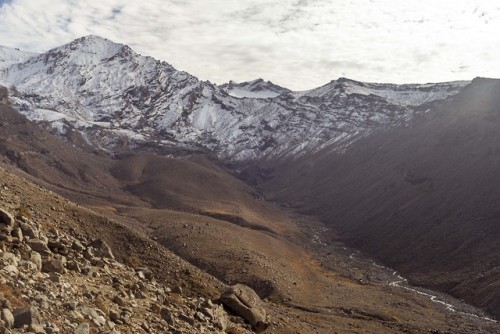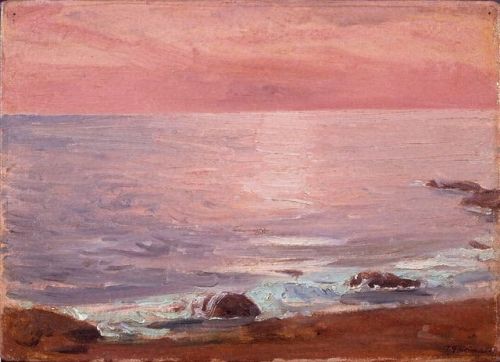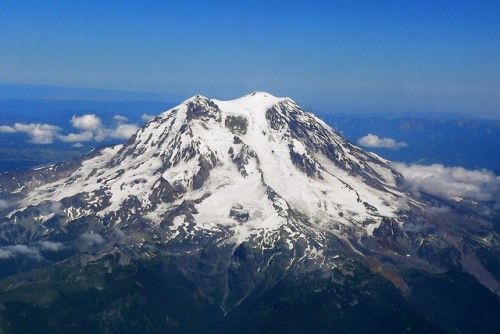Rocks-everywhere - Science, Plants, Cats, Music, And More








More Posts from Rocks-everywhere and Others

Mount Ruapehu - Tongariro National Park
How is Biotechnology Preparing us to Live on the Moon and Mars?
The adventures awaiting astronauts on future long-duration missions have technologists researching sustainable ways to live away from Earth. We’re using what we know from almost 20 years of a continuous human presence on the International Space Station and looking at new technologies to prepare for extended stays on the Moon and Mars.

Biotechnology – technology that uses living organisms to make products that provide a new use – is key to this research.
With biotechnology, we’re developing new ways to manufacture medicines, build habitats and more in space. Here are some ways biotechnology is advancing spaceflight and how the same research is reaping benefits on Earth.

Healthy astronauts
Planning ways to supply food for a multi-year mission on the Moon or Mars may require making food and nutrients in space. Our scientists are testing an early version of a potential solution: get microorganisms to produce vital nutrients like those usually found in vegetables. Then, whenever they’re needed, astronauts can drink them down.
The microorganisms are genetically engineered to rapidly produce controlled quantities of essential nutrients. Because the microorganisms and their food source both have a long shelf-life at room temperature and only need water to be activated, the system provides a simple, practical way to produce essential nutrients on-demand. The same kind of system designed for space could also help provide nutrition for people in remote areas of our planet.
Our researchers are evaluating the first batches of BioNutrient samples that came back to Earth after an experimental run on the International Space Station.

Because space travel takes a toll on the human body, we’re also researching how biotechnology can be used to advance the field of regenerative medicine.
Related cells that are joined together are collectively referred to as tissue, and these cells work together as organs to accomplish specific functions in the human body. Blood vessels around the cells vascularize, providing nutrients to the tissue to keep it healthy.
Our Vascular Tissue Challenge offers a $500,000 prize to be divided among the first three teams that successfully create thick, metabolically-functional human vascularized organ tissue in a controlled laboratory environment. The vascularized, thick-tissue models resulting from this challenge will function as organ analogs, or models, that can be used to study deep space environmental effects, such as radiation, and to develop strategies to minimize the damage to healthy cells.
Plant factories
Humans have relied on plants’ medicinal qualities for thousands of years for everything from alleviating minor ailments to curing serious diseases. Now, researchers are trying to simplify the process of turning plants into medicine (i.e. how to make it compact and portable). If successful, the cost of biomanufacturing pharmaceuticals on Earth could go down, and plants could produce medicines in space.

Creating medicine on demand isn’t something we typically do, so we’re turning to experts in the field for help. Researchers at the University of California, Davis are transforming plants into mini-medicine factories for future Mars missions. They’re genetically altering an ordinary type of lettuce so that it produces a protein called parathyroid hormone. This hormone is an approved drug for treating osteoporosis, a common condition where bones become weak and brittle.

This type of research is vital to long duration spaceflight. When astronauts land on Mars, they’ll need to be strong—ready to explore. The length of the flight in zero gravity to get there and lower gravity on the surface could have a negative impact on human bones. Having the technologies needed to treat that possibility, and other unanticipated health effects of long duration spaceflight, is crucial.
Growing habitats
Vitamins aren’t the only thing astronauts could be growing on Mars; we’re exploring technologies that could grow structures out of fungi.
An early-stage research project underway at our Ames Research Center is prototyping technologies that could “grow” habitats on the Moon, Mars and beyond out of life – specifically, fungi and the unseen underground threads that make up the main part of the fungus. These tiny threads build complex structures with extreme precision, networking out into larger structures like mushrooms. With the right conditions, they can be coaxed into making new structures – ranging from a material similar to leather to the building blocks for a planetary home.
The myco-architecture project envisions a future where astronauts can construct a habitat out of the lightweight fungi material. Upon arrival, by unfolding a basic structure made up of dormant fungi and simply adding water, the fungi would grow around that framework into a fully functional human habitat – all while being safely contained to avoid contaminating the external environment.

Recycling waste
Once astronauts arrive on the surface of the Moon or a more distant planet, they’ll have to carefully manage garbage. This waste includes some stuff that gets flushed on Earth.
Today, we’re already using a recycling system on the space station to turn urine into drinking water. Poop on the other hand is contained then disposed of on spacecraft returning to Earth. That won’t be possible on more distant journeys, so, we’re turning to biomanufacturing for a practical solution.
Biology can serve as an effective recycling factory. Microorganisms such as yeast and algae feed on all kinds of things classified as “mission waste.” Processing their preferred form of nourishment generates products that can serve as raw materials used to make essential supplies like nutrients, medicines, plastic and fuel.

By taking a careful look at biological processes, we hope to develop new, lightweight systems to leverage that biology to do some helpful in-space manufacturing.
From Space to Earth
Biotechnology is preparing us for longer space missions to the Moon and then Mars – farther from Earth than humans have ever traveled before. As we prepare for those exciting missions, we’re also conducting research on the space station for the primary benefit of everyone on Earth.
January is National Biotechnology Month. To learn more about some of the ways NASA is using biotechnology to solve challenges in space and improve life on Earth, visit this link.
Make sure to follow us on Tumblr for your regular dose of space: http://nasa.tumblr.com




Sea Landscapes by Japanese artist Fujishima Takeji (1867-1943)
The Sea at Sunrise l Oarai l Waves l Sunrise at the Port of Kobe

Deep magma reservoir below Mt Rainier
Researchers from Norway and the US have mapped an 8 by 16 km magma chamber at 8 km depth below Washington State’s Mount Rainier. The detailed map was created by measuring the variations in the magnetic and electrical fields as well as seismic imaging. Researchers suggest that this map could help us predict when volcanoes will erupt.
Keep reading




Geology collection, Museum of Natural History, London
I miss doing microscope work. Can we make a thread of our favourite thin section? This is mine
Actinolite Schist

shanemichaelblack
Stormy skies at Maroon Bells a couple years ago.
This radiant Sodalite mineral rock. Tenebrescence is the ability of minerals to change colour when exposed to light.
Source


Barnes and Nobles is gonna start serving food and alcohol.
Everybody’s cracking jokes about how it’s a desperate attempt to stay relevant in the age of Amazon.
But you know what? Props to them. This is exactly what Blockbuster didn’t do. At no point was Blockbuster like “Hey, movie rentals aren’t the lucrative enterprise they once were. Perhaps it’s time we become known for our cheesy garlic bread.”
-
 froddo-baggins reblogged this · 1 year ago
froddo-baggins reblogged this · 1 year ago -
 neph-le-geek reblogged this · 1 year ago
neph-le-geek reblogged this · 1 year ago -
 darlingavasilva reblogged this · 1 year ago
darlingavasilva reblogged this · 1 year ago -
 crazymissbaggins liked this · 1 year ago
crazymissbaggins liked this · 1 year ago -
 frodohaven liked this · 2 years ago
frodohaven liked this · 2 years ago -
 moln22 liked this · 2 years ago
moln22 liked this · 2 years ago -
 glittzysunflowermaze liked this · 2 years ago
glittzysunflowermaze liked this · 2 years ago -
 neph-le-geek reblogged this · 2 years ago
neph-le-geek reblogged this · 2 years ago -
 filmmakerdreamst liked this · 2 years ago
filmmakerdreamst liked this · 2 years ago -
 alea-samantha19 reblogged this · 2 years ago
alea-samantha19 reblogged this · 2 years ago -
 pyramidofmice reblogged this · 2 years ago
pyramidofmice reblogged this · 2 years ago -
 moriquendii reblogged this · 3 years ago
moriquendii reblogged this · 3 years ago -
 duvetturtle liked this · 3 years ago
duvetturtle liked this · 3 years ago -
 whatthebirdssay reblogged this · 3 years ago
whatthebirdssay reblogged this · 3 years ago -
 going-there-and-back-again reblogged this · 3 years ago
going-there-and-back-again reblogged this · 3 years ago -
 dancealivetime reblogged this · 3 years ago
dancealivetime reblogged this · 3 years ago -
 carolina-star liked this · 3 years ago
carolina-star liked this · 3 years ago -
 moriquendii reblogged this · 3 years ago
moriquendii reblogged this · 3 years ago -
 tolkien-bout-doctor reblogged this · 3 years ago
tolkien-bout-doctor reblogged this · 3 years ago -
 daenerys-targaryen liked this · 3 years ago
daenerys-targaryen liked this · 3 years ago -
 carriexbradshaw reblogged this · 3 years ago
carriexbradshaw reblogged this · 3 years ago -
 afolksongs reblogged this · 3 years ago
afolksongs reblogged this · 3 years ago -
 cinnamonmagick reblogged this · 3 years ago
cinnamonmagick reblogged this · 3 years ago -
 emily-roberts liked this · 3 years ago
emily-roberts liked this · 3 years ago -
 falcor-thee-luck-dragon reblogged this · 3 years ago
falcor-thee-luck-dragon reblogged this · 3 years ago -
 ave-aria liked this · 3 years ago
ave-aria liked this · 3 years ago -
 uhlexis liked this · 3 years ago
uhlexis liked this · 3 years ago -
 cinnamonmagick liked this · 3 years ago
cinnamonmagick liked this · 3 years ago -
 aaziraphales reblogged this · 3 years ago
aaziraphales reblogged this · 3 years ago -
 sapphireswimming reblogged this · 3 years ago
sapphireswimming reblogged this · 3 years ago -
 sapphireswimming liked this · 3 years ago
sapphireswimming liked this · 3 years ago -
 falcor-thee-luck-dragon liked this · 3 years ago
falcor-thee-luck-dragon liked this · 3 years ago -
 madamwayne liked this · 3 years ago
madamwayne liked this · 3 years ago -
 galaxsighs reblogged this · 3 years ago
galaxsighs reblogged this · 3 years ago -
 galaxsighs liked this · 3 years ago
galaxsighs liked this · 3 years ago -
 abbadabbadoooooooooo liked this · 3 years ago
abbadabbadoooooooooo liked this · 3 years ago -
 satansbra reblogged this · 3 years ago
satansbra reblogged this · 3 years ago -
 allaboutthelittlethings reblogged this · 3 years ago
allaboutthelittlethings reblogged this · 3 years ago -
 namjoonieisdaddy reblogged this · 3 years ago
namjoonieisdaddy reblogged this · 3 years ago -
 darkrayne12 liked this · 3 years ago
darkrayne12 liked this · 3 years ago -
 the-realm-of-middle-earth reblogged this · 3 years ago
the-realm-of-middle-earth reblogged this · 3 years ago -
 telume liked this · 3 years ago
telume liked this · 3 years ago -
 honeybeaus liked this · 3 years ago
honeybeaus liked this · 3 years ago
225 posts